EOFY checklist for FIFO workers.
As the end of the financial year rolls around, most Australians start sifting through receipts and bracing for tax time.
For WA’s fly-in, fly-out (FIFO) workforce, EOFY isn’t just about lodging a tax return — it’s a golden opportunity to check in on your financial strategy and set yourself up for long-term security.
With high earning potential, complex income structures, time away from home and often a lack of regular financial routines, approaching EOFY with a clear plan is essential. Here’s our practical checklist to help FIFO workers make the most of their money.
1. Collate all income.
FIFO workers often earn above-average incomes, which can push them into higher tax brackets. That’s why it’s crucial to gather all your income information — income statements, interest statements, dividends and rental income (if applicable).
If you’ve worked across multiple contracts or sites during the year, make sure every source is declared. The Australian Taxation Office is increasingly using data matching, so accuracy is your best ally.
2. Track work-related expenses.
Working remotely can mean significant out-of-pocket costs. Depending on your role, you may be entitled to claim:
- Tools and protective gear.
- Travel between work sites (but not between home and site).
- Self-education relevant to your current role.
- Union fees and licences.
The ATO has tightened its rules around deduction claims, so keeping solid records — receipts, invoices and logbooks — is essential. Using a tool like the free app ReceiptHub can make collating expenses much easier.
3. Understand your LAFHA.
Some FIFO employees receive a Living Away From Home Allowance (LAFHA) to offset additional costs like meals and accommodation.
However, LAFHA isn’t always tax-free, and eligibility rules vary. Check with your employer and accountant to make sure it’s reported correctly and you’re not missing potential benefits.
4. Check your super contributions.
Many FIFO workers miss the opportunity to boost their retirement savings and reduce taxable income through voluntary contributions.
If you haven’t reached your $30,000 concessional contribution cap this financial year, there may be room to top up. You may also be able to claim a tax deduction for personal contributions.
If your partner earns less than $40,000, spouse contributions can offer extra tax benefits. An accountant or financial adviser can help calculate the right amount based on your cash flow and savings goals.
5. Review your loan structures.
EOFY is the perfect time to assess your loans — mortgages, investment property finance and personal loans. Ask yourself:
- Am I on the most competitive rate?
- Is my loan structure aligned with my income cycle?
- Would refinancing free up equity or help consolidate debt?
For FIFO workers, offset accounts or redraw facilities can help keep cash flow flexible between swings and rosters. Even a small interest rate change can mean big savings over the life of a high-value loan.
This is also a good time to explore long-term tax-reduction strategies, such as negative gearing through investment properties. With your current earning power, you can start setting yourself up financially now so that you’re making the most of your time working away — and creating income streams that support you well into the future.
6. Set clear goals for the year ahead.
You work hard — often in challenging conditions. Make EOFY your reset button.
A step-by-step approach can help:
- Pay off small personal debts first — they quickly drain cash flow.
- Reduce your owner-occupied mortgage to a level you could maintain if you moved to local work.
- Direct additional surplus cash into investments or savings.
Get the right professional support.
Your situation is unique, and your financial strategy should be too.
Engage a combination of independent advice from an accountant, financial adviser and mortgage broker — ideally those experienced in FIFO finances. Many offer after-hours or virtual appointments to fit around your roster.
At Ascent Accountants, we work alongside FIFO workers to make tax time a stepping stone towards lasting financial success. Talk to us today.
Need help with your accounting?








